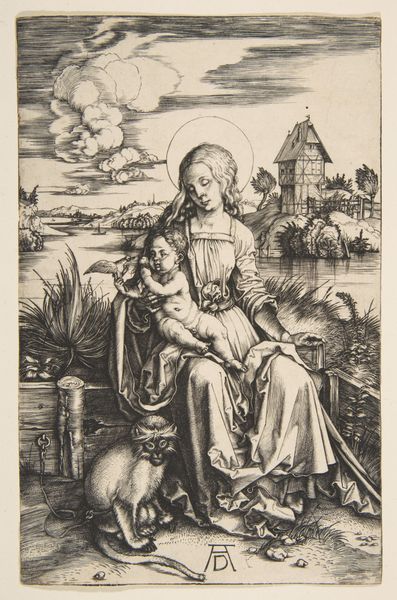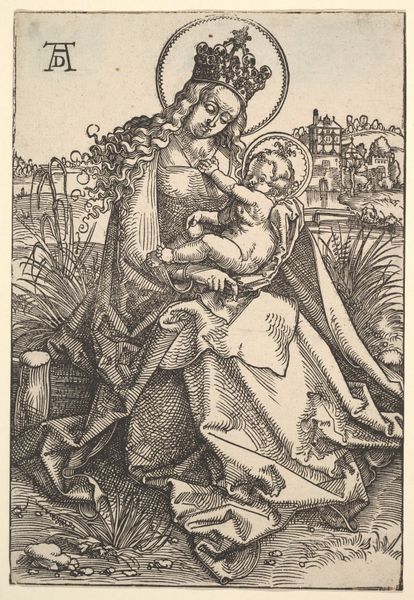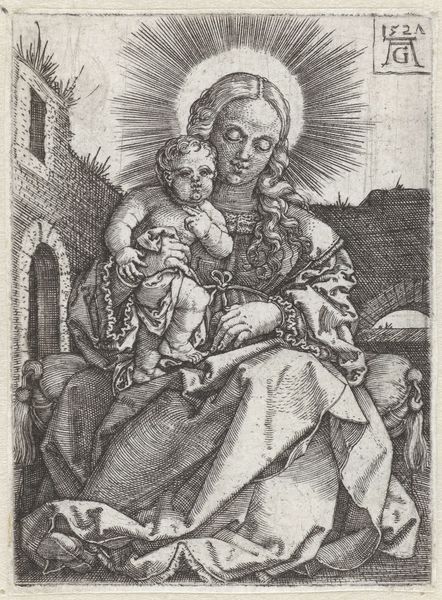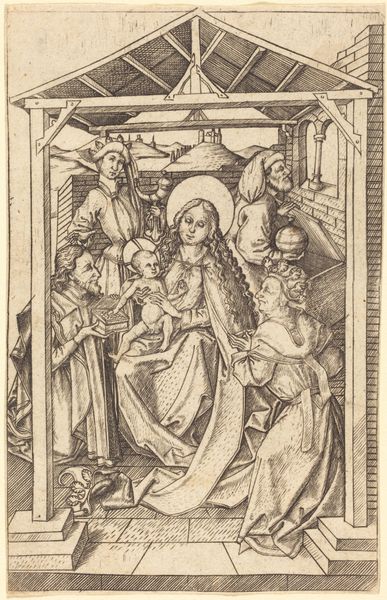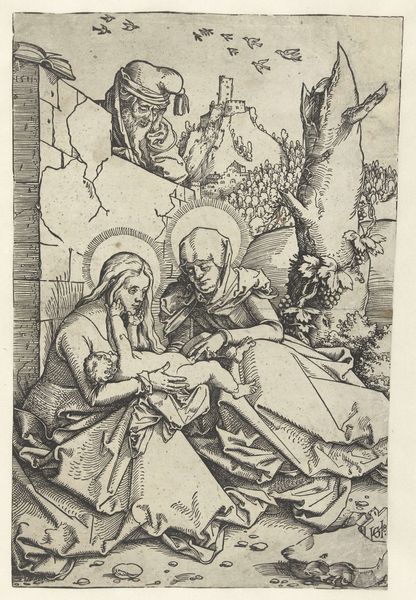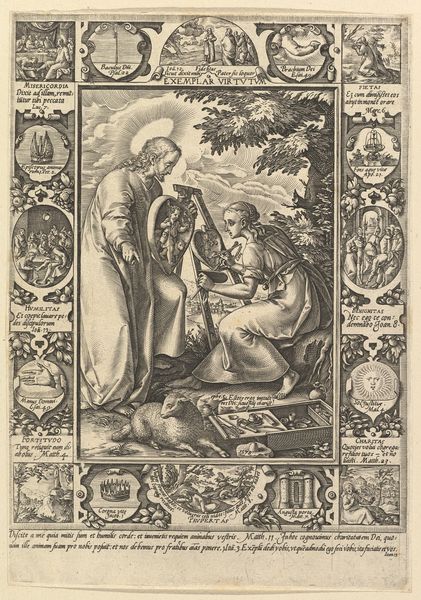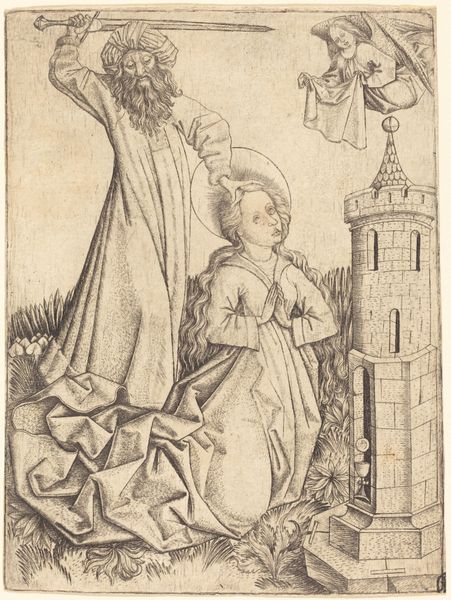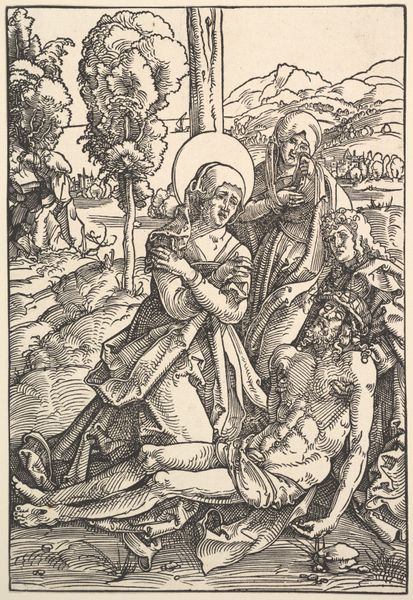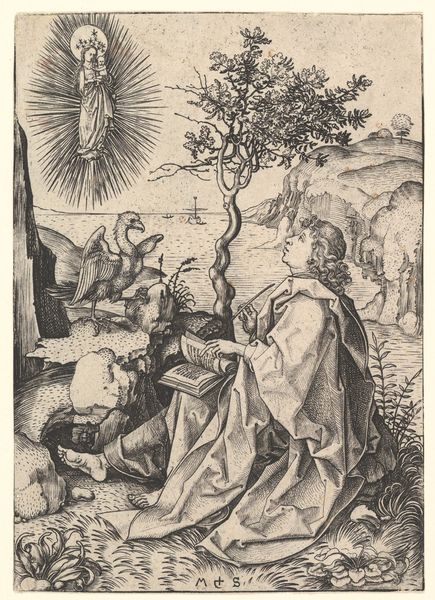
Dimensions: 168 mm (height) x 108 mm (width) (bladmaal)
Editor: Here we have “Madonna with the Monkey,” an etching dating from around 1498 to 1510, made by Monogrammist SH. I’m immediately struck by the contrast between the detailed realism of the figures and the almost dreamlike quality of the landscape. How do you interpret this work? Curator: From a materialist perspective, the printmaking process itself is key. Etching allowed for a dissemination of imagery, transforming artistic production into a more accessible commodity. Think about who would have consumed these images and what sort of social message it brings. Editor: A commodity…interesting! How does the monkey fit into this? Curator: The monkey chained in the foreground is the perfect object to contemplate in light of production and consumption! The image subtly implicates its owner/viewer. Was the monkey a household object? Or was it a luxury product used to emphasize its owner's wealthy situation? I mean, why is a chained-up animal associated with the virgin Mary, and who consumes such kind of visual paradox? Editor: That makes me think about the artist's labor, too. Etching required a very particular skill set; they would be participating in this commercial world, while at the same time criticizing and pointing towards potential exploitation in human and non-human realms. Curator: Precisely! It also opens the discussion on how material culture influences meaning. This print invites us to reflect on the production of images and the social dynamics inherent in their consumption. Editor: This has really changed my perception; seeing the work through the lens of production gives me a different interpretation beyond just its visual elements. Curator: Indeed. It's a powerful example of how analyzing process and materials reveals complex societal values of the time.
Comments
No comments
Be the first to comment and join the conversation on the ultimate creative platform.
